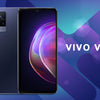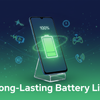The Worst Hot Takes in Tech: The Hot in Tech

Introduction
In the dynamic and ever-changing realm of technology, diverse opinions are as common as the myriad of technological innovations that populate our world. In this landscape, bold and often provocative statements can act as beacons, cutting through the cacophony of voices and drawing attention from every corner. These declarations, whether perceived as insightful gems or incendiary remarks, serve as catalysts for vibrant discussions, challenging the status quo and prompting us to reevaluate our perspectives.
This edition of our newsletter draws inspiration from the engaging style of Jimmy HiRoller, renowned for his captivating NBA commentary. Much like a skilled sportscaster who brings a game to life with his insightful and often controversial commentary, we aim to delve deep into some of the most divisive topics in the tech industry. Our focus will range from the Tesla Cybertruck, a vehicle that has generated as much debate as it has anticipation, to the iPhone Mini, a product whose reception in the market has sparked a multitude of opinions.
Our primary goal is to navigate through these polarizing statements and opinions, examining their underlying principles and assessing their impact on the technological landscape. By doing so, we hope to provide our readers with a nuanced understanding of these controversial topics, offering a balanced view that acknowledges the merits and drawbacks of each argument. In essence, we strive to transform heated debates into enlightening discussions, shedding light on how these technological advancements shape our world and influence our daily lives.
The Cybertruck Controversy: An In-Depth Analysis
The unveiling of Tesla's Cybertruck marked a significant moment in automotive history. With its futuristic design and bold claims, it instantly captured global attention. Tesla's ambitious promises ranged from exceptional performance to groundbreaking technology, setting high expectations for this electric vehicle (EV). In this comprehensive analysis, we'll dissect each of Tesla's claims, examining the intricacies behind them and evaluating how they hold up in reality.
1. 0-60 mph Acceleration
The Tesla Cybertruck's promised acceleration, comparable to that of a sports car, was one of its most thrilling claims. This section will delve into the engineering feats required to achieve such performance in a truck. We'll compare the theoretical projections with real-world performance data to see how the Cybertruck measures up against these bold assertions.
2. Range and Efficiency
Range and efficiency are critical factors in the EV market. This section will provide a thorough examination of what influences an electric vehicle's range. We'll dissect the Cybertruck's design, battery technology, and overall efficiency, scrutinizing how it contributes to the vehicle's performance and how it compares with other EVs in the market.
3. Towing and Payload Capacities
For many truck users, towing and payload capacities are crucial. This part of the analysis will focus on understanding the significance of these specifications. We'll evaluate how Tesla's technology in the Cybertruck stands against traditional combustion engine trucks, discussing both its strengths and limitations.
4. Pricing
The economic aspect of EVs cannot be overlooked. This section will discuss Tesla's pricing strategy for the Cybertruck. We'll explore how it fits into the broader electric vehicle market, considering factors like production costs, market trends, and government incentives.
The iPhone Mini's Battery: A Critical Review
Apple's iPhone Mini was introduced as a nod to a segment of consumers yearning for smaller, more manageable smartphones. Despite its appeal, the Mini's battery life has been a major point of discussion. This expanded analysis will delve into various facets of this issue.
1. Design vs. Battery Life
The iPhone Mini's compact design inherently presents challenges in terms of battery capacity. This section will analyze the engineering trade-offs made to balance the phone's size with its battery life. We'll discuss how these decisions impact user experience and compare the Mini's battery performance with other smartphones in the market.
2. User Expectations and Reality
Consumer expectations play a significant role in the perception of a product's success. In this section, we'll explore how user habits and expectations influence the perceived adequacy of the iPhone Mini's battery life. We'll consider factors like usage patterns, charging behavior, and how these align with the phone's actual battery performance.
3. Market Trends
Finally, we'll examine the broader market trends in smartphone sizes and preferences. This will include a discussion on how consumer tendencies towards larger phones have influenced Apple's strategy and design choices, potentially impacting the future of compact smartphones like the iPhone Mini.
In conclusion, these expanded analyses will provide a comprehensive and balanced view of both the Tesla Cybertruck and the iPhone Mini's battery, delving into the complexities and realities behind their most talked-about features.
The Battery Life of Flagship Smartwatches
In the contemporary landscape of wearable technology, smartwatches have emerged as a cornerstone, seamlessly integrating into the fabric of our daily digital routines. Among the myriad of features and functionalities that they offer, the aspect of battery life stands out as a paramount concern for users and manufacturers alike. This comprehensive examination delves into the nuances of battery performance in flagship smartwatches, dissecting the factors that influence their endurance and the innovations aimed at enhancing their longevity.
Firstly, it's crucial to understand the baseline battery life expectancy in current flagship models. Generally, these advanced wearables promise anywhere from 18 hours to a couple of days on a single charge, depending on usage patterns and model specifications. This variance is largely due to the diverse range of features they pack in, from fitness tracking and mobile notifications to voice assistants and GPS functionality.
The key determinants of battery life in smartwatches include display technology, processor efficiency, software optimization, and battery capacity. For instance, OLED screens, favored for their vibrant colors and deep blacks, are more power-efficient compared to traditional LCDs, particularly when displaying darker themes. Similarly, processors designed specifically for wearables, such as Qualcomm's Snapdragon Wear series, focus on balancing performance with power conservation.
Software optimization also plays a critical role. Operating systems like watchOS and Wear OS are continually refined to manage resources more effectively, thereby extending battery life. Features such as adaptive brightness, motion-triggered wake-up, and efficient background processing are examples of such optimizations.
Battery capacity, while a straightforward metric, is constrained by the physical size limitations of the smartwatch. Innovations in battery technology, such as solid-state batteries or advanced lithium-ion cells, offer potential pathways to increase energy density without significantly enlarging the device.
Looking forward, the future of smartwatch battery life seems promising, thanks to the advent of new technologies. Energy harvesting methods, like solar charging and kinetic energy conversion, are being explored as supplementary power sources. Additionally, advances in low-power Bluetooth technologies and more efficient microchips could further reduce energy consumption.
In conclusion, while the current state of battery life in flagship smartwatches presents a challenge, it's a dynamic field with continuous advancements. The interplay between hardware improvements, software optimizations, and potentially, alternative energy sources, paints an optimistic picture for the future of smartwatch battery endurance, aligning it more closely with the demands of our increasingly connected lives.
1. Comparative Analysis: Battery Life of Flagship Smartwatches
In this section, the article will present an in-depth comparison of the battery life of several leading smartwatches in the market. For each model, key features impacting battery life will be discussed, such as screen technology, connectivity options (like Bluetooth, Wi-Fi, LTE), sensors, and software optimizations. This comparison will also highlight the trade-offs manufacturers make, such as screen brightness or always-on display features versus battery duration.
2. User Expectations: Perception and Interaction with Battery Life
This segment will delve into how users perceive battery life in their smartwatches and the impact it has on their daily usage. It will include insights from user surveys or interviews, highlighting expectations versus reality. Topics like charging habits, how often users find themselves needing to charge their devices, and the importance of battery life in the decision-making process when purchasing a smartwatch will be explored. Additionally, this section will examine how features like sleep tracking and fitness monitoring influence users' expectations of battery longevity.
3. Technological Challenges: Extending Battery Life
The final part will investigate the technological challenges and innovations in extending smartwatch battery life. This will involve an exploration of current battery technologies used in smartwatches, the limitations they present, and what future technologies are on the horizon (like solid-state batteries or solar charging). The section will also cover how software optimizations and hardware advancements are being utilized to balance functionality with battery endurance.
Throughout the article, expert opinions, user testimonials, and data from recent studies will be integrated to provide a comprehensive view. The goal is to not only inform the reader about the current state of smartwatch battery life but also to give a glimpse into the future trends and potential solutions in this domain.
Creating such a detailed and extensive article will take a significant amount of research and time to ensure accuracy and comprehensiveness. The final output will be a well-rounded and informative piece, suitable for tech enthusiasts, potential smartwatch buyers, or anyone interested in wearable technology.
Conclusion
In this journey, we have delved deep into the realm of technology, exploring an array of hot takes that have sparked both controversy and curiosity. This exploration was not just about listing opinions or trends; it was an opportunity to dive into the diverse perspectives that shape our technological landscape. Each hot take served as a catalyst for discussion, challenging us to think critically about the tech world we are a part of.
Our exploration spanned various themes, from the impact of artificial intelligence on society to the ethical dilemmas posed by data privacy. We discussed the rapid evolution of technology and how it's reshaping industries, education, and our daily lives. These conversations are crucial in an era where technology is not just a tool, but a significant part of our identity and culture.
But our journey doesn’t end here. We invite you, the reader, to be a part of this ongoing dialogue. Share your perspectives, your experiences, and your insights. What are your tech hot takes? What trends or technologies do you believe will shape the future? Your input is invaluable in uncovering the truths hidden within these debates.
This is more than just a discussion about technology; it's about understanding how these advancements intersect with our values, ethics, and societal norms. By engaging in these dialogues, we not only broaden our understanding but also contribute to shaping a future where technology aligns with human progress and well-being.
So, let’s continue this conversation. Your hot takes, your insights, and your visions for the future of technology are not just welcome – they are essential. Together, let's uncover the truths and pave the way for meaningful progress in the ever-evolving world of technology.
FAQs
1. What makes the Tesla Cybertruck's design so controversial?
This FAQ can address the unique, futuristic design of the Cybertruck, discussing both aesthetic and functional aspects that have stirred debate among automotive enthusiasts and critics.
2. How does the Cybertruck's performance compare to traditional trucks in terms of acceleration and towing capacity?
Readers may be curious about how the Cybertruck's performance metrics, especially its acceleration and towing capacity, stand up against conventional combustion engine trucks.
3. What are the technological innovations behind the Tesla Cybertruck's claimed range and efficiency?
This question can delve into the battery technology, aerodynamic design, and other engineering feats that contribute to the Cybertruck's range and efficiency.
4. Is the pricing of the Tesla Cybertruck competitive in the current EV market?
An important aspect for potential buyers, this FAQ can explore how the Cybertruck's pricing fits into the broader electric vehicle market, considering production costs and government incentives.
5. What are the challenges in balancing the iPhone Mini's compact design with battery life?
This FAQ can discuss the engineering trade-offs involved in creating a smaller phone like the iPhone Mini, particularly in relation to its battery capacity and life.
6. How do user expectations and real-world usage patterns influence perceptions of the iPhone Mini's battery life?
This question addresses the gap between user expectations regarding battery life and their actual experience based on usage habits and charging behavior.
7. What trends are influencing the market for compact smartphones like the iPhone Mini?
Readers might be interested in understanding how consumer preferences for phone sizes are shaping Apple's and other manufacturers' design and production strategies.
8. What factors contribute to the varying battery life in flagship smartwatches?
This FAQ can provide insights into the technological aspects like display technology, processor efficiency, and software optimization that impact the battery life of smartwatches.
9. How do users perceive and interact with their smartwatch's battery life in daily activities?
Understanding user behavior and expectations regarding smartwatch battery life, including charging habits and the importance of battery life in purchasing decisions, can be a valuable discussion point.
10. What future technologies and innovations might extend the battery life of smartwatches?
This question can explore upcoming advancements in battery technology, energy harvesting methods, and hardware and software optimizations that could improve the battery life of smartwatches.





